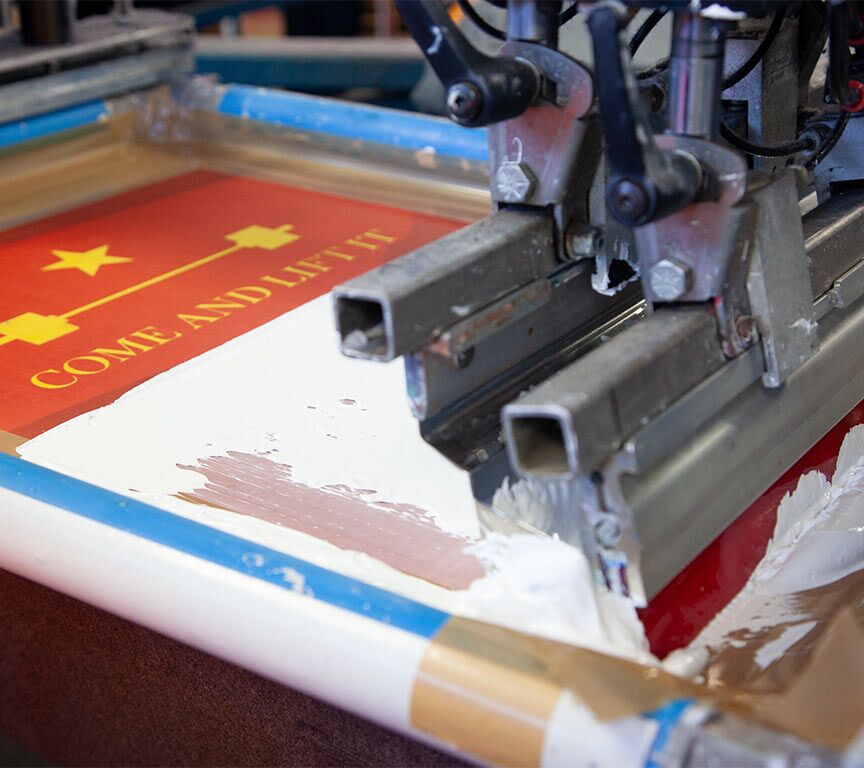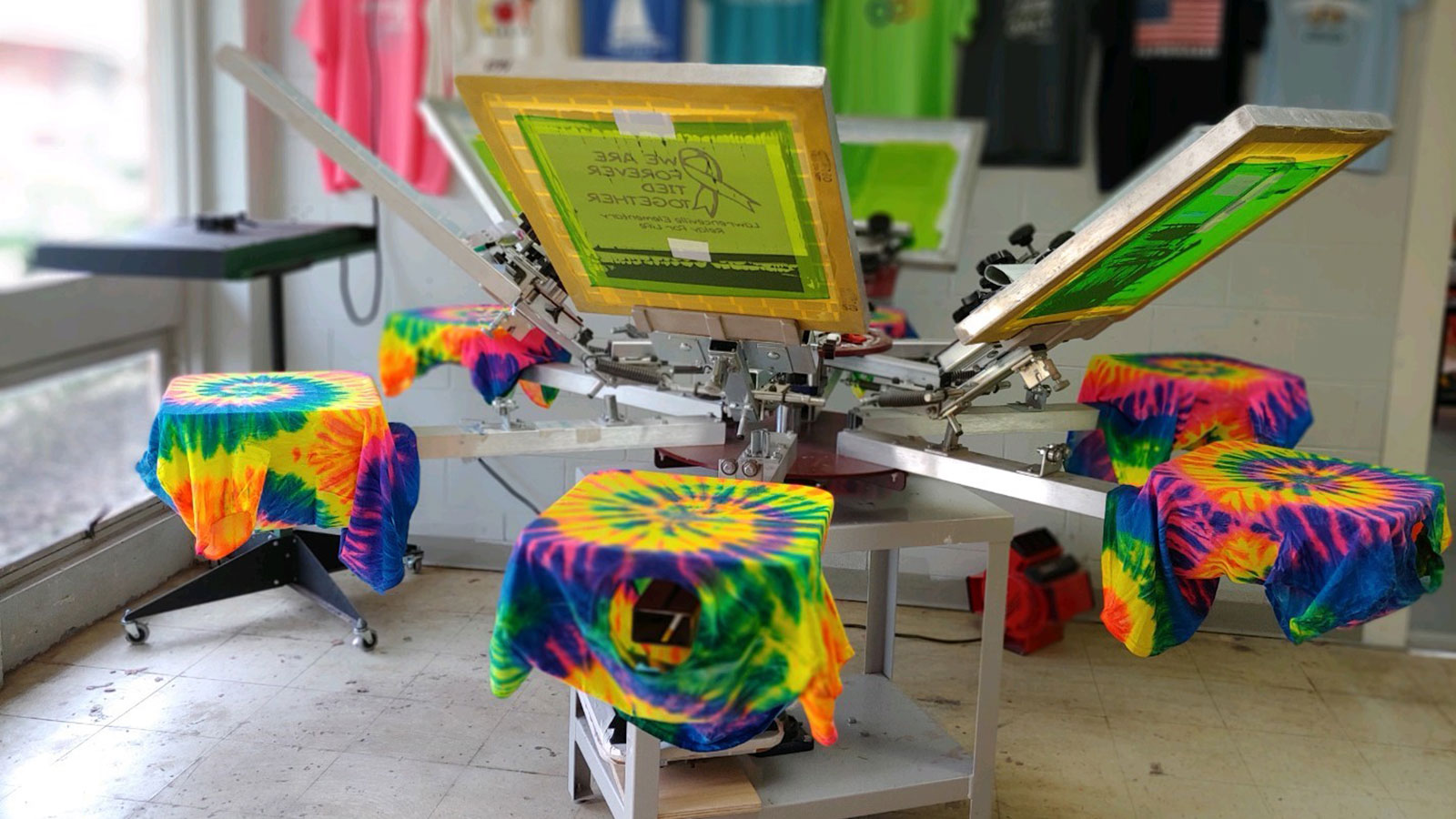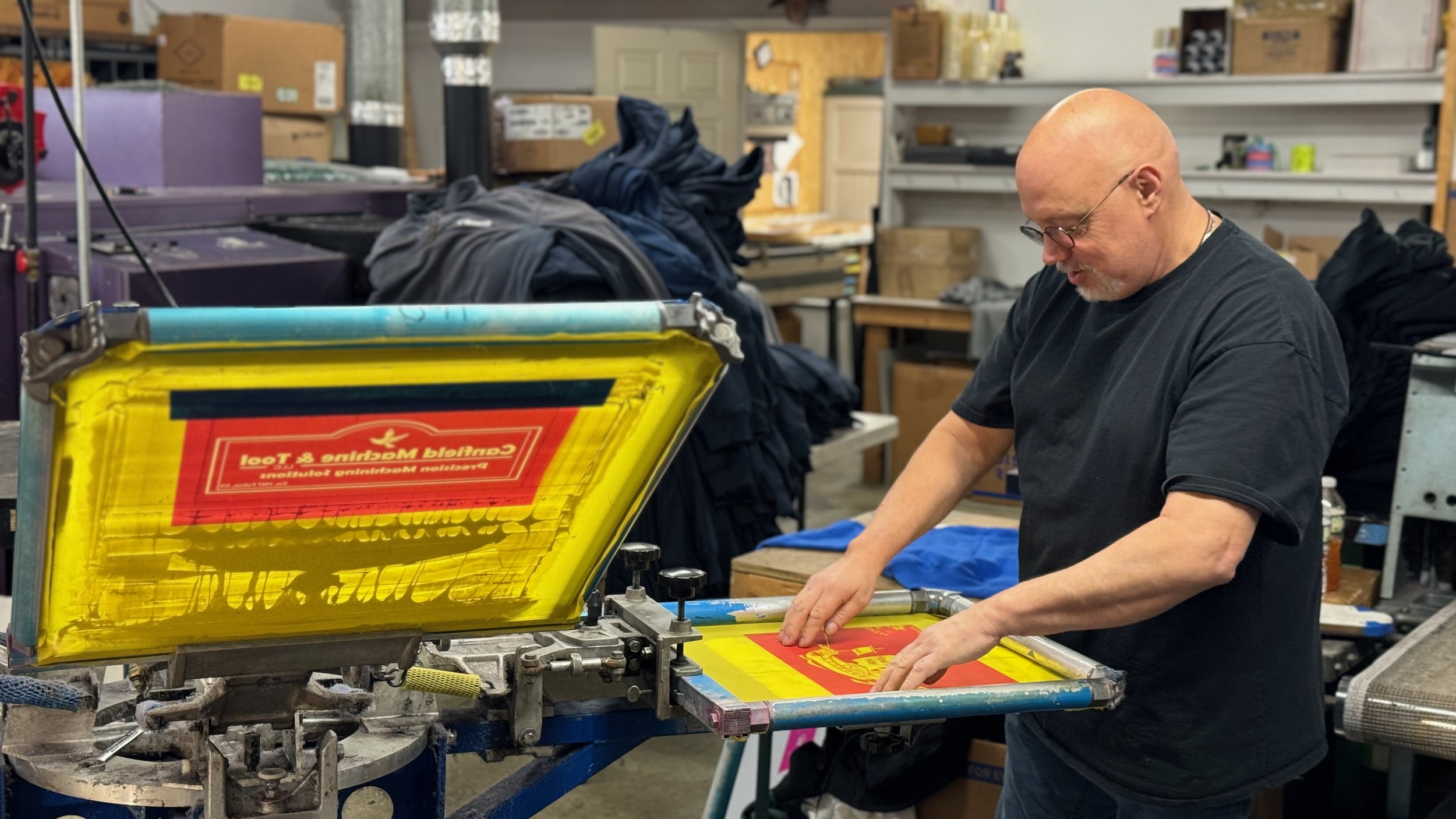Affordable Custom Screen Printing Services for Small Businesses
Affordable Custom Screen Printing Services for Small Businesses
Blog Article
Screen Printing Uncovered: Every Little Thing You Required to Learn About Tee Shirt and Garment Printing Strategies
Display printing is an interesting method that integrates art with technique, supplying countless possibilities for imagination. Ready to discover the essential elements that make screen publishing an art kind?
The Essentials of Screen Printing: Exactly How It Functions
When you plunge into display printing, you'll discover it's both an art and a science. At its core, display printing entails producing a stencil, or screen, that allows ink to pass via only in certain locations.
Position the screen over the fabric, after that utilize a squeegee to push ink through the screen onto the garment. Each step is essential, and mastering them will elevate your display printing abilities, transforming basic garments right into special, meaningful pieces.
Sorts Of Display Printing Techniques
As soon as you comprehend the essentials of screen printing, it's time to check out the numerous methods that can elevate your layouts. One preferred approach is conventional screen printing, where ink is pushed with a stenciled display.
Another alternative is plastisol printing, known for its longevity and vivid colors, making it a favorite for numerous brand names. Experiment with halftone printing to produce slope results and intricate layouts.
Necessary Equipment for Screen Printing
To attain spectacular cause screen printing, having the right tools is fundamental. You'll require a tough screen printing frame, which holds the mesh that moves your style onto the garment. Next, buy high-grade mops; these are essential for applying ink equally across the display. You'll also need a good direct exposure system to develop your screens, along with a washout cubicle for cleansing them after usage. A trustworthy warm source, like a conveyor dryer or warm press, is vital for treating your prints to assure longevity. Don't neglect an appropriate work space, equipped with tables and storage space for your products. Safety equipment, such as masks and gloves, will keep you safe from chemicals and inks. With the right devices, you'll be well on your means to creating professional-quality prints.
Selecting the Right Inks and Products
When selecting inks and products for screen printing, you require to take into account the kind of ink that functions best for your job. Think of textile compatibility to ensure your styles look last and excellent long. Discover green ink alternatives to make your printing procedure more sustainable.
Sorts Of Display Inks
Selecting the ideal screen ink is necessary for achieving dynamic, resilient prints that satisfy your job's demands. There are a number of sorts of display inks to take a look at. Plastisol ink is preferred for its convenience and convenience of use, supplying excellent shade opacity on dark textiles. Water-based ink, on the other hand, uses a softer feeling and is green, making it optimal for those wanting to lessen their environmental effect. Discharge inks get rid of color from the textile, causing a soft, classic appearance yet need specific handling. Specialized inks, such as glow-in-the-dark or metal, can add special impacts to your designs. Review your project requirements and pick the ink that straightens finest with your preferred outcome.

Textile Compatibility Considerations
Understanding material compatibility is vital for achieving top notch screen prints, specifically considering that different materials respond distinctly to various inks. Always evaluate your inks on example material to ensure they adhere correctly and keep color honesty. In addition, maintain in mind that fabric weight and texture can affect the final end result, so selecting the appropriate ink and product combo is vital for your project's success.
Eco-Friendly Ink Options
Environmentally friendly inks are coming to be a popular option for display printers that wish to decrease their ecological influence while maintaining quality. When picking inks, consider water-based inks, which are less harmful and simpler to tidy up contrasted to conventional solvents. These inks bond well with fabrics, providing dynamic results without toxic chemicals. You might additionally discover eco-solvent inks that make use of less unpredictable organic substances (VOCs), making them a much safer alternative for both your health and the planet.
Additionally, try to find inks made from sustainable resources, such as soy or vegetable-based choices. By choosing the best inks and products, you'll not only produce magnificent styles yet likewise add to a more lasting printing procedure. Make the button, and your prints will mirror your commitment to the atmosphere!
Preparing Your Layout for Display Printing

Submit Format Needs
To assure your layout looks sharp and dynamic on fabric, you'll require to pay close focus to submit layout demands for screen printing. Make certain your layout has a transparent history to protect against unwanted white edges on your prints. Maintain color settings in mind; CMYK is basic for display printing, so convert your RGB designs as necessary.
Color Splitting Up Techniques
Color splitting up is a necessary action in preparing your layout for display printing, and grasping it can considerably improve your print high quality. You'll need to break your layout right into private colors, as each color calls for a separate display throughout printing. This accuracy not only guarantees accurate shade representation yet also simplifies the printing procedure.
Resolution and Dimension
Accomplishing the very best results in screen printing starts with ensuring your style has the best resolution and dimension. Ideally, your art work ought to be at the very least 300 DPI (dots per inch) for sharp, clear prints. Your final item could look pixelated and unprofessional. if you use reduced resolution.
When it concerns dimension, think about the measurements of your print location. Layout your art work to match the final print dimension, preferably producing it in the actual measurements you'll be publishing. By doing this, you'll stay clear of any unexpected scaling problems.
Always inspect your style in both vector and raster layouts. look at more info Vector graphics can be scaled without losing quality, making them suitable for screen printing. Preparing correctly will ensure your layout looks incredible on every garment!
Step-by-Step Display Printing Refine
Screen printing is a dynamic process that enables you to develop dynamic styles on different surface areas. To get started, you'll require a display, emulsion, and your picked ink.
Pour ink onto the screen and use a squeegee to press the ink through the pattern onto the textile. Lift the display thoroughly and let the print dry. You have actually effectively display printed your layout.
Tips for Successful Display Printing Projects
While you're diving into your display printing tasks, keep in mind that preparation is vital to success. Start by gathering all your products-- inks, squeegees, displays, and garments. A clean office helps stop undesirable errors, so clean up prior to you begin.
Following, verify your artwork is high-resolution and effectively sized for your garment. Check your screen for proper exposure and tidy it thoroughly to stay clear of smudges. When blending your inks, adhere to the producer's standards to achieve the ideal consistency.
During printing, apply even stress with your squeegee for consistent results. Do not hurry; take your time to verify each print fulfills your standards. After printing, let your garments dry completely before taking care of or packaging them.
Finally, constantly maintain an example of your job for future reference. By doing this, you can analyze your development and boost your techniques gradually. Delighted printing!

Regularly Asked Questions
The length of time Does It Take to Set up a Display Printing Task?
Setting up a screen printing task usually takes around thirty minutes to an hour. You'll prepare the screens, mix inks, and adjust the press. The time differs based on complexity and experience, so stay arranged!
Can I Print on Different Material Keys In Utilizing the Exact Same Method?
Yes, you can publish on different fabric types making use of the exact same strategy, however you'll require to change your setups and inks. Some fabrics absorb ink in different ways, so experimenting assurances the ideal outcomes for each material.
What Are Usual Mistakes to Avoid in Display Printing?
When display printing, avoid typical blunders like using the wrong ink, disregarding proper direct exposure times, or missing pre-press checks. Constantly evaluate your setup and maintain tidy screens to guarantee quality results each time.
How Can I Appropriately Clean and Preserve My Screen Printing Tools?
To effectively clean and preserve your display printing equipment, you should frequently wash screens with suitable solvents, check mops for wear, and ensure all tools are kept dust-free and completely dry. Consistency improves and protects against pricey fixings efficiency.
Is Screen Printing Environmentally Pleasant Compared to Other Methods?
Display printing can be more environmentally friendly than other methods, specifically if you use eco-conscious materials and water-based inks. By choosing lasting Home Page supplies and techniques, you minimize waste and reduce your effect on the earth.
Screen Printing Uncovered: Everything You Required to Know About Tee Shirt and Garment Printing Techniques
At its core, screen printing involves producing a stencil, or screen, that allows ink to pass via just in certain areas. Setting the display over the fabric, then utilize a squeegee to push ink with the display onto the garment. One popular technique is conventional screen printing, where ink is pressed with a stenciled screen.When selecting inks and products for display printing, you need t-shirt printing to take into account the type of ink that works best for your task.
Report this page